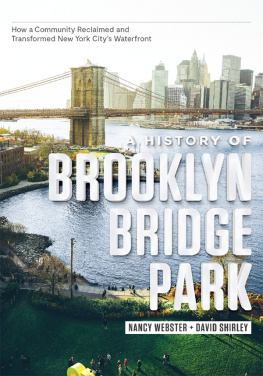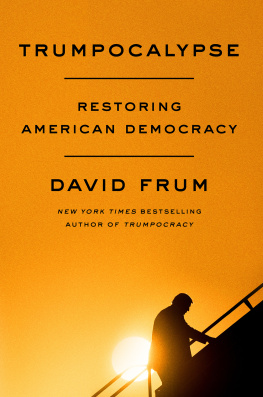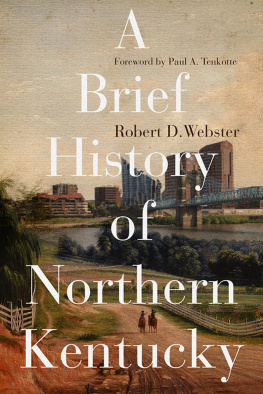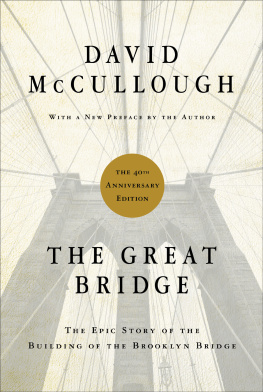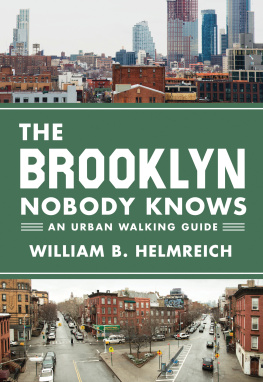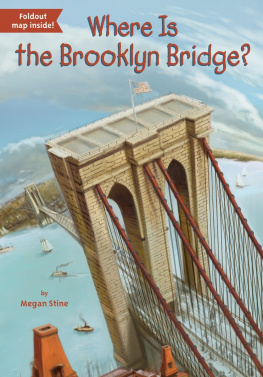A HISTORY OF BROOKLYN BRIDGE PARK
Aerial view of Brooklyn Bridge Park site, ca. 1980.
MICHAEL VAN VALKENBURGH ASSOCIATES, INC.
Aerial view of future Brooklyn Bridge Park, ca. 1980.
MICHAEL VAN VALKENBURGH ASSOCIATES, INC.
NANCY WEBSTER + DAVID SHIRLEY
A HISTORY OF BROOKLYN BRIDGE PARK
HOW A COMMUNITY RECLAIMED AND TRANSFORMED NEW YORK CITYS WATERFRONT
COLUMBIA UNIVERSITY PRESS | NEW YORK
COLUMBIA UNIVERSITY PRESS
Publishers Since 1893
New YorkChichester, West Sussex
cup.columbia.edu
Copyright 2016 Brooklyn Bridge Park Conservancy
All rights reserved
E-ISBN 978-0-231-54294-4
Library of Congress Cataloging-in-Publication Data
Names: Webster, Nancy, 1960 author.|Shirley, David, 1955 author.
Title: A history of Brooklyn Bridge Park : how a community reclaimed and transformed New York Citys waterfront / Nancy Webster and David Shirley.
Description: New York : Columbia University Press, 2016.|Includes bibliographical references and index.
Identifiers: LCCN 2016009008 (print)|LCCN 2016019804 (ebook)|ISBN 9780231171229 (cloth : alk. paper)|ISBN 9780231542944 (ebook)
Subjects: LCSH: Brooklyn Bridge Park (New York, N.Y.)History.|ParksNew York (State)New YorkHistory.
Classification: LCC F129.B7 W24 2016 (print)|LCC F129.B7 (ebook)|DDC 974.7dc23
LC record available at https://lccn.loc.gov/2016009008
A Columbia University Press E-book.
CUP would be pleased to hear about your reading experience with this e-book at .
COVER AND BOOK DESIGN: VIN DANG
COVER PHOTO: JORGE QUINTEROS STOCKSY
CONTENTS
W E WOULD LIKE TO EXPRESS OUR THANKS to the following individuals whose memories, advice, and perseverance were essential to completing this history of Brooklyn Bridge Park.
First, thank you to Otis Pearsall and Scott Hand, whose monograph on the early 1980s provided such a valuable stepping off point for our research of the Brooklyn Bridge Park movement.
Thank you to the staff members of the Brooklyn Collection at the Brooklyn Public Library and the Othmer Library at the Brooklyn Historical Society (particularly Deborah Schwartz, president of the Brooklyn Historical Society) for providing us with access to their extensive archives of photographs, reports, institutional records, personal correspondence, and media articles on the history of the west Brooklyn waterfront.
Our interview subjects provided the substance of this narrative and allowed the history of the social movement that gave birth to the park to come alive on the page. As we hope to have successfully demonstrated, many hundreds of people made meaningful contributions to the park. We wish there had been the time and resources to interview more of them.
Thank you to JillEllyn Riley, Nina Collins, Howard Morhaim, and Johnny Temple, all literary sages, who steered us from proposal to publisher. And thank you to Philip Leventhal at Columbia University Press who took the book in hand, shaped it, and made it better.
Marianna Koval, Tensie Whelan, and Regina Myer provided particular assistance in helping us identify key dates, players, and events in the life of the park.
This book could not have been written without the support of the Brooklyn Bridge Park Conservancy, whose board and staff supported the extensive research effort into the origins of the park. A particular thank you goes to former board chairwoman Nancy Bowe and current chairman Mark Baker, who believe deeply and passionately in Brooklyn Bridge Park and the Conservancy and have devoted untold hours to help create this special park on the Brooklyn waterfront.
Finally, every project of worth and import has an overseer who pushes it forward and provides encouragementas well as the occasional upbraidto ensure that deadlines are met and quality remains high. We owe our deepest gratitude to Kara Gilmour for her luminous spirit, insight, patience, and steady hand. She got us here.
Flow on, river! Flow with the flood-tide and ebb with the ebb-tide!
Frolic on, crested and scallop-edged waves!
Gorgeous clouds of the sunset! drench with your splendor me,
Or the men and women generations after me!
Cross from shore to shore, countless crowds of passengers!
Stand up, tall masts of Mannahatta! Stand up, beautiful hills of Brooklyn!
WALT WHITMAN, CROSSING BROOKLYN FERRY
O N A RAINY MONDAY MORNING in late March 2010, a large and illustrious group of New Yorkers crowded together on a granite staircase on a landscaped hillside above the west Brooklyn shoreline, with the spectacular views of New York Harbor, the Brooklyn Bridge, and the lower Manhattan skyline sprawling out beneath them. The occasion for the gathering was the highly anticipated ribbon cutting for Pier 1, the first official section of Brooklyn Bridge Park to be opened to the public. The nine-acre site featured vast green lawns, a playground, and a spacious promenade along the river. New York City mayor Michael Bloomberg and New York governor David Paterson were on hand to voice their appreciation of the achievement, along with an impressive collection of state legislators, city officials, and community leaders and a soggy but enthusiastic group of teenage twirlers from nearby Fort Hamilton High School.
In the six years since the public celebration at Pier 1, Brooklyn Bridge Park has expanded to include 1.3 miles and close to 85 acres of public space on and adjacent to Piers 16, along with the Fulton Ferry Landing area just north of the piers between the Brooklyn and Manhattan Bridges. In addition to the green lawns and playground on Pier 1, the park now includes numerous athletic fields and recreational facilities, a sandy beach for strolling and nonmotorized boating, a row of sound-attenuating hills that insulate the park grounds from the noise of the roadways and busy neighborhoods above it, and a continuous greenway along the waterfront. Since its opening in 2010, the park has attracted millions of visitors, with thousands of people arriving each day to enjoy the beauty of the landscape and the scenic views of the East River and the lower Manhattan skyline; to use the parks playgrounds and recreational facilities; and to participate in the hundreds of volunteer programs and cultural, educational, and recreational events conducted at the park each year.
ALTHOUGH BROOKLYN BRIDGE PARK STANDS as the crown jewel of the East River waterfront and one of New York Citys most popular destinations for both tourists and local residents, it almost never came to be. The realization of the park was the result of a long and challenging process for the committed group of citizens who first envisioned a public space along the west Brooklyn shoreline. The park represents the culmination of a three-decade-long campaign on the part of local residents and community leaders to restore the once-bustling Brooklyn waterfront to public access and control.
The campaign to create a park on the piers began in the early 1980s, when employees of the Port Authority of New York and New Jersey (the independent public agency that owned the vast majority of the property) contacted the leaders of the neighborhood associations that represented the communities adjacent to the waterfront regarding the agencys intentions to dispose of Piers 16 on the Brooklyn shoreline of the East River. Changes in the global-shipping industry had recently resulted in the increasing disuse of the property, and state and local political leaders and public authorities, eager to revitalize the citys economy following the recession of the previous decade, viewed the development of the once-thriving but by then mostly abandoned piers as a potential source of revenue and job creation. The Brooklyn community leaders initial concerns centered on the potential impact of the proposed disposition of the piers on the neighborhoods they represented. Many local residents were particularly worried that high-rise condominiums and other commercial developments would disturb the extraordinary views of the East River, the Brooklyn Bridge, and the Manhattan skyline that had long been a hallmark of Brooklyn Heights, an affluent neighborhood situated on a high bluff above the East River.




